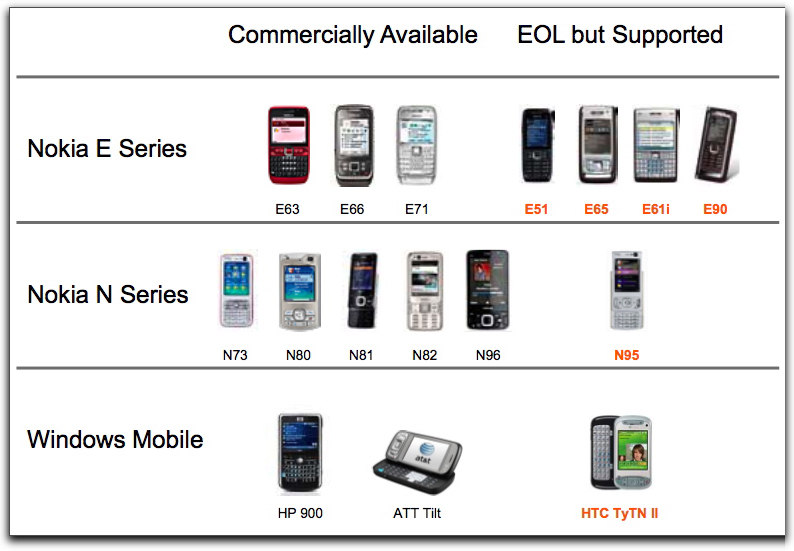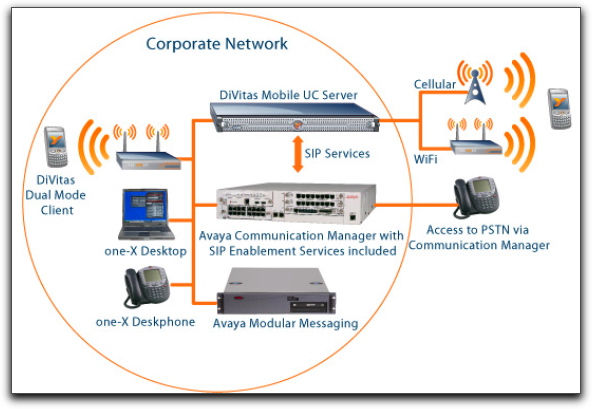DiVitas
 I first met Vivek Khuller, founder and CEO of DiVitas in New York City at a conference where we both sat on a panel about enterprise mobility or fixed-mobile convergence that was organized by industry analyst Craig Matthias, in 2006. Vivek presented the DiVitas business plan for mobile UC and spoke about his firm’s plan to build an appliance that would work with any IP PBX with a client to run on any dual model (WiFi and cellular) mobile device. Vivek was confident that the quality, feature set and battery-life of dual mode devices was only going to improve in the coming years.
I first met Vivek Khuller, founder and CEO of DiVitas in New York City at a conference where we both sat on a panel about enterprise mobility or fixed-mobile convergence that was organized by industry analyst Craig Matthias, in 2006. Vivek presented the DiVitas business plan for mobile UC and spoke about his firm’s plan to build an appliance that would work with any IP PBX with a client to run on any dual model (WiFi and cellular) mobile device. Vivek was confident that the quality, feature set and battery-life of dual mode devices was only going to improve in the coming years.
 Well, in the past three years, the company has come a long way towards these constructs. The mobile devices supported includes a wide array of current and unavailable Nokia platforms (enterprise life cycles of products in use often exceed the manufacturer’s commitment to support), Windows Mobile and soon the Apple iPhone. More recently, Vivek stopped me at the buffet counter at a restaurant during VoiceCon and showed off their new iPhone client then in development. I’ll be posting the footage once DiVitas has announced support.
Well, in the past three years, the company has come a long way towards these constructs. The mobile devices supported includes a wide array of current and unavailable Nokia platforms (enterprise life cycles of products in use often exceed the manufacturer’s commitment to support), Windows Mobile and soon the Apple iPhone. More recently, Vivek stopped me at the buffet counter at a restaurant during VoiceCon and showed off their new iPhone client then in development. I’ll be posting the footage once DiVitas has announced support.
No doubt, one of the challenges with a business model focused on the dual-mode market is that while the WiFi-side of the mobile device presents a lot of freedom for the developer since the network and the manufacturer assumes IP as the relevant protocol and usually supports features that are practical for the application.
It is however, the cellular-side of the device that causes much interaction, assumptions and both user, developer, manufacturer and mobile operator heartburn. That’s because the network connection is so narrow, the operator insistence on some form of control for over the device and the network and the manufacturer runs a fine line in the tradeoffs between processor, memory and features of the mobile device versus cost. Developers are the last ones to be asked to do something with a particular device on a particular network to do a particular business application, which may or may not have the power, the memory or the OS capabilities the developer needs to achieve their functional or reliability goal. DiVitas is no exception to this challenge.
The DiVitas Vision for Mobile UC
 The DiVitas solution is a client and server implementation that can optionally integrate with any of a large number of enterprise IP PBXs to provide mobile UC services for users with any of the dual mode devices listed in the graphic above. For greenfield environments there is no need to purchase an IP PBX since the DiVitas solution incorporates an Asterisk server to provide VoIP session control and services. The solution is designed to interoperate equally well with an existing IP PBX implementation that the customer may already have.
The DiVitas solution is a client and server implementation that can optionally integrate with any of a large number of enterprise IP PBXs to provide mobile UC services for users with any of the dual mode devices listed in the graphic above. For greenfield environments there is no need to purchase an IP PBX since the DiVitas solution incorporates an Asterisk server to provide VoIP session control and services. The solution is designed to interoperate equally well with an existing IP PBX implementation that the customer may already have.
This graphic from the DiVitas-Avaya joint announcement (left) shows the range of typical capabilities tuned for Avaya customers. At the heart of the offer is the DiVitas Mobile UC Server which coordinates presence reporting, directory services and other communications services with the DiVitas mobile UC client running on the dual mode device. The server also coordinates real-time interactions with other devices – mobile phones, UC clients – and the PSTN.
Specifically for Avaya customers, the DiVitas Mobile UC server interoperates using SIP signaling with the Avaya Communications Manager (with SIP Enablement Services) and the Avaya Modular Messaging server for visual voicemail interaction so enterprise voicemail messaging can be effectively managed without relying on DTMF codes. The client-enabled dual mode device can initiate VoIP calls directly to Avaya one-X deskphones, one-X desktop clients, PSTN devices and other mobile devices.
This post has already been read 0 times!
Edit
